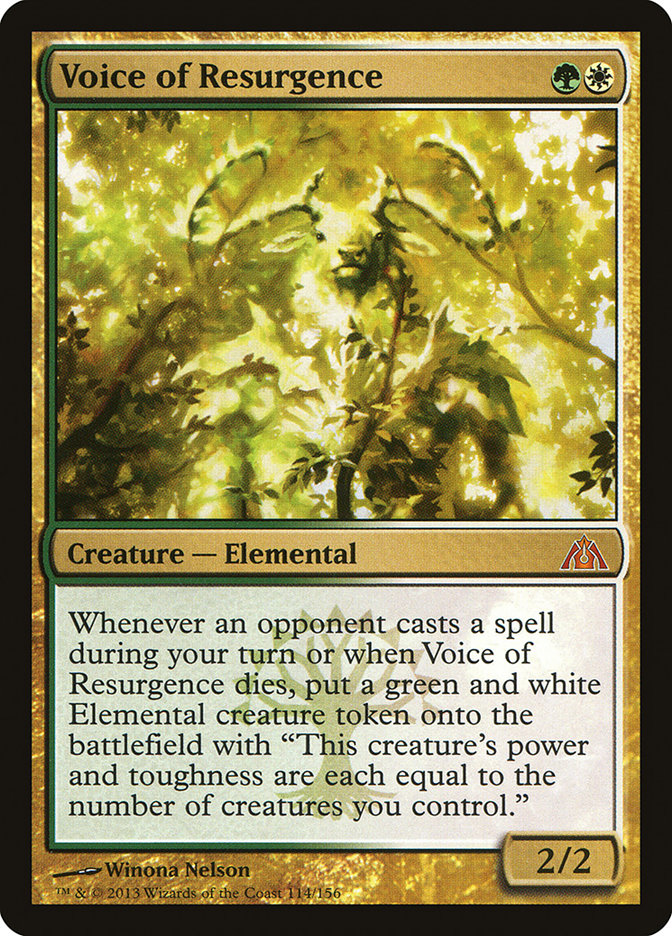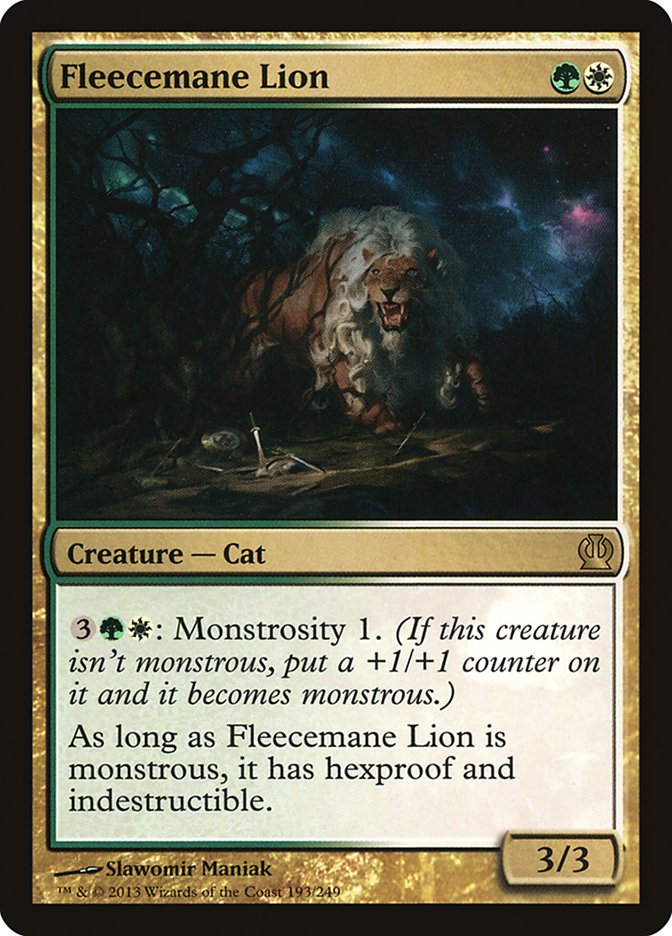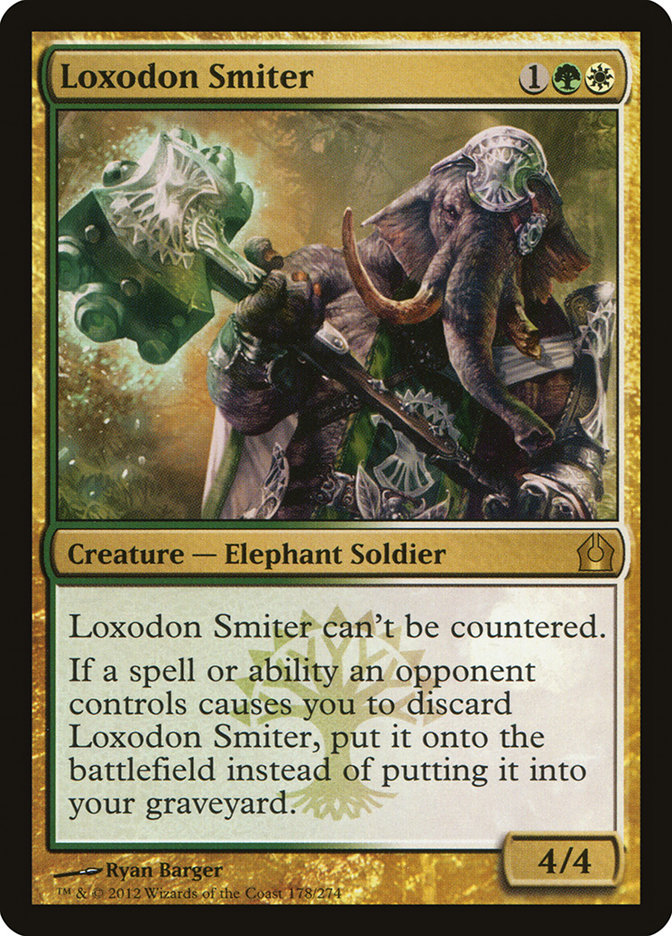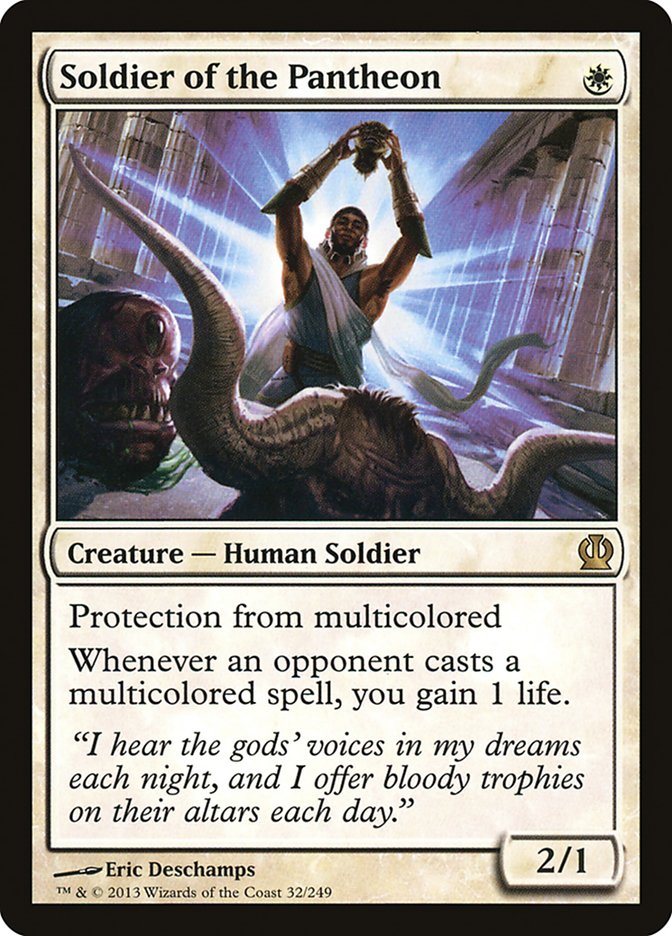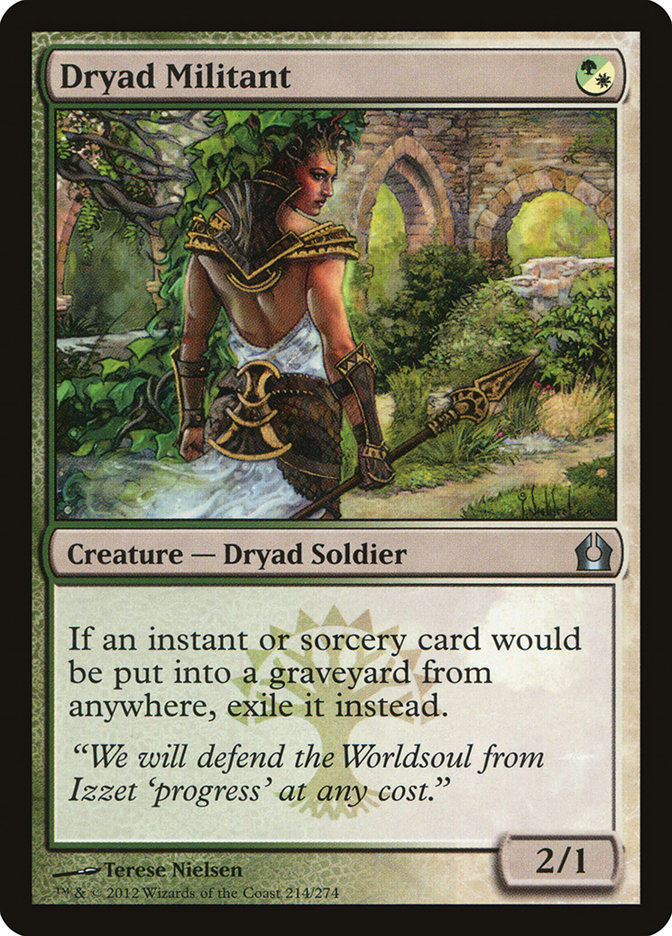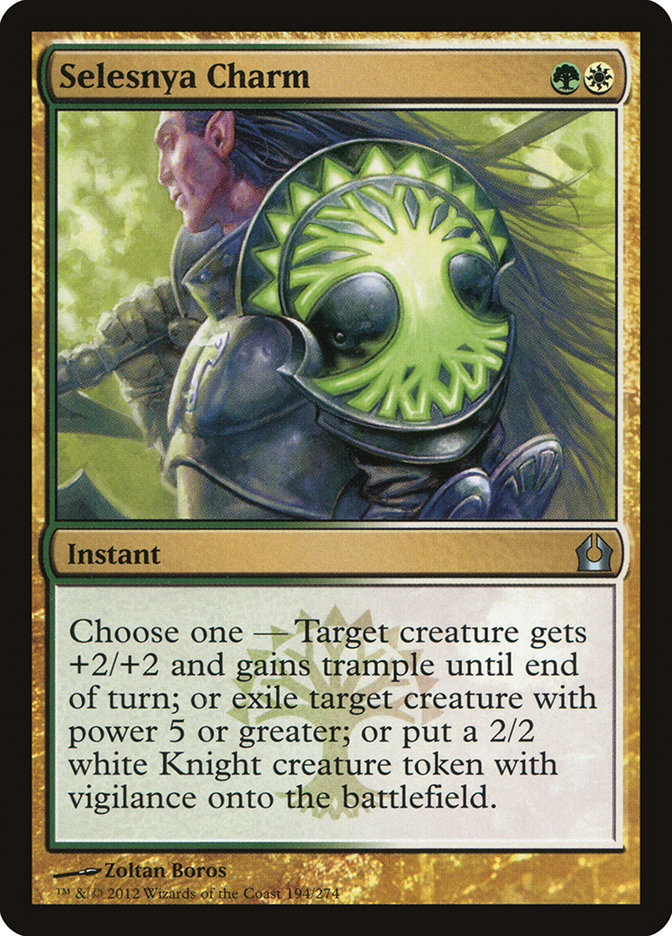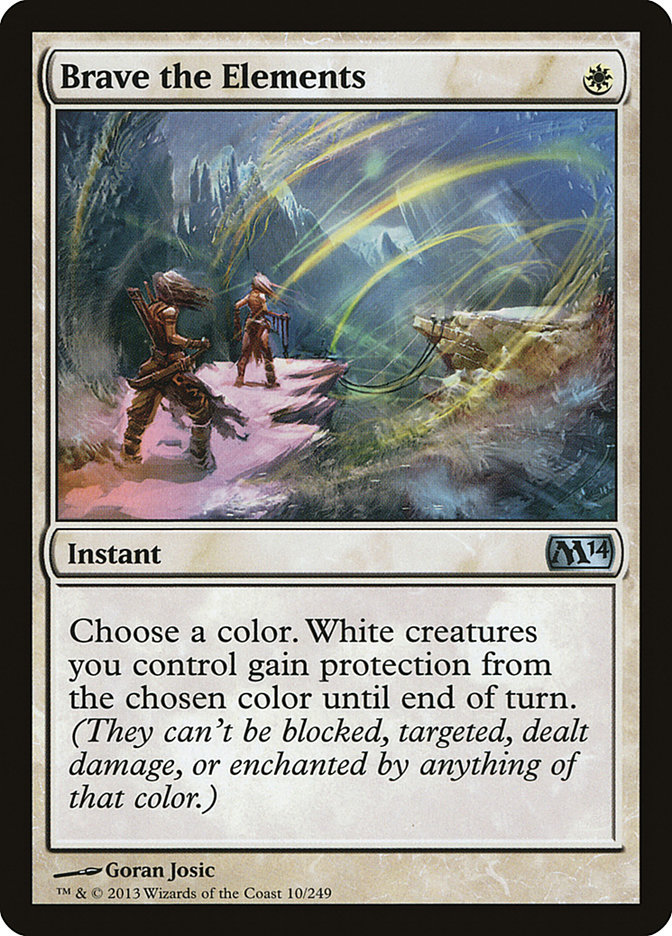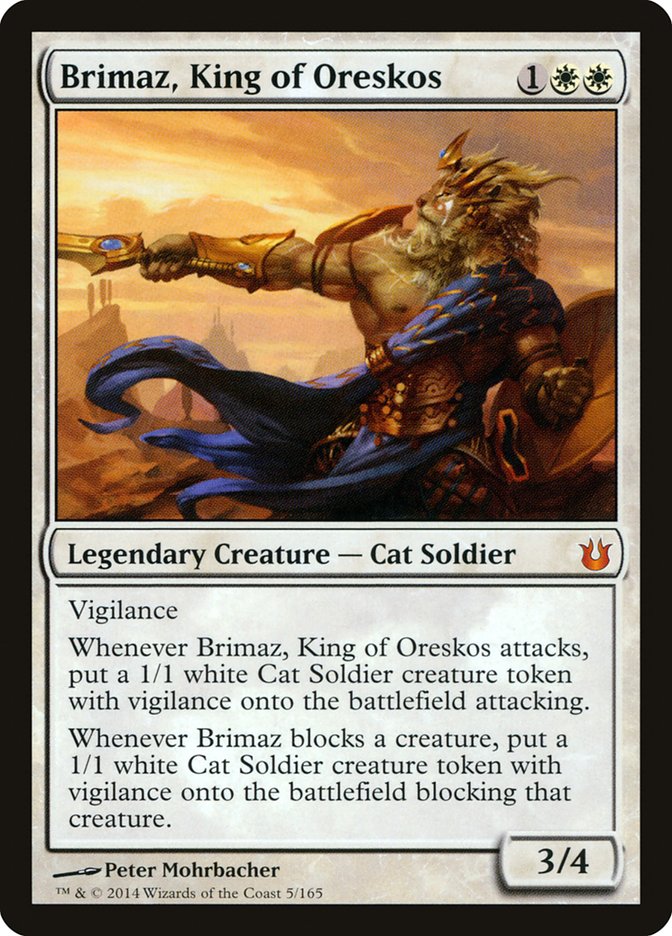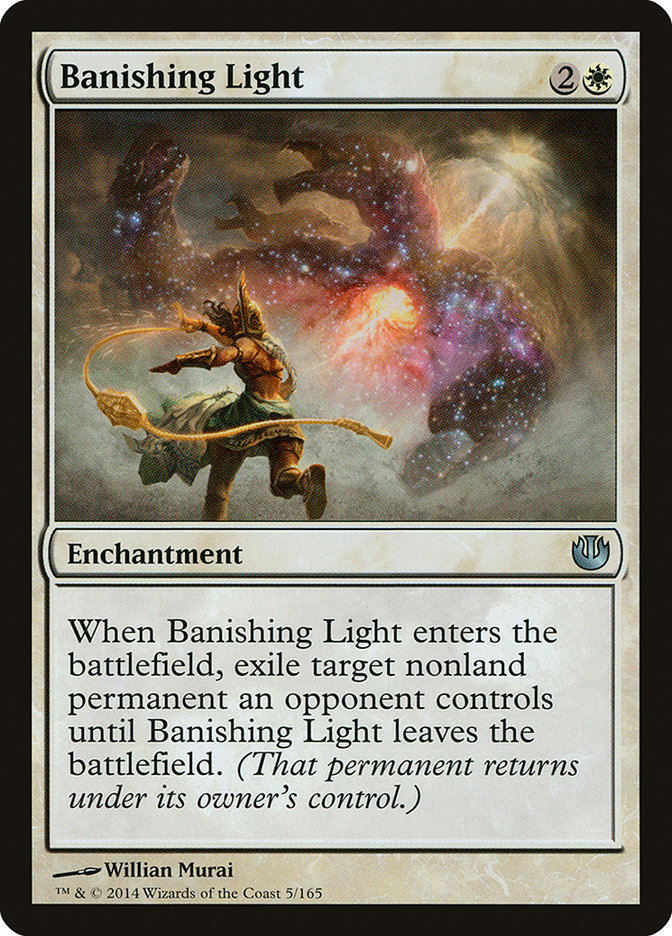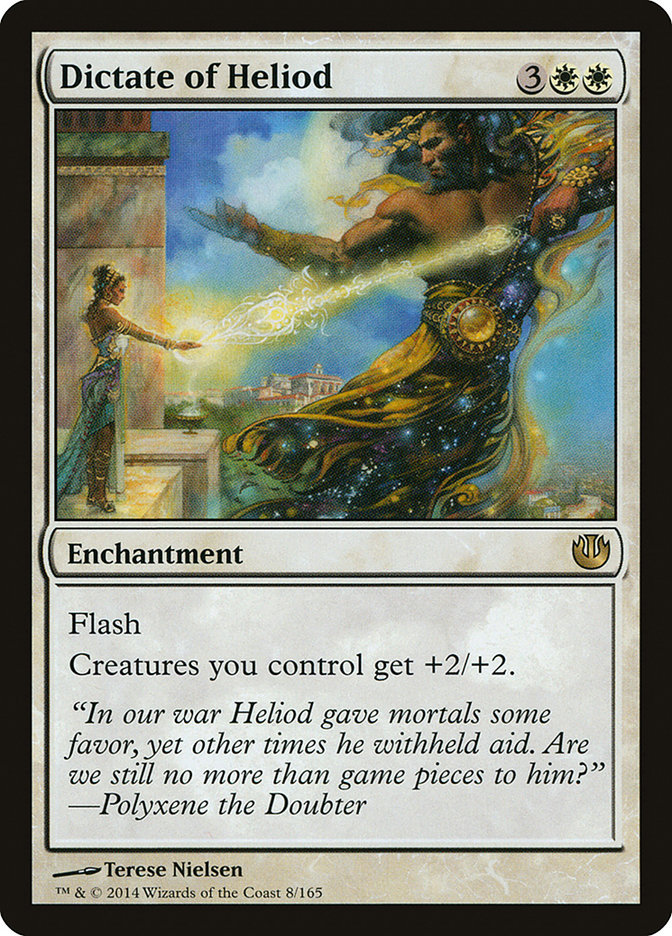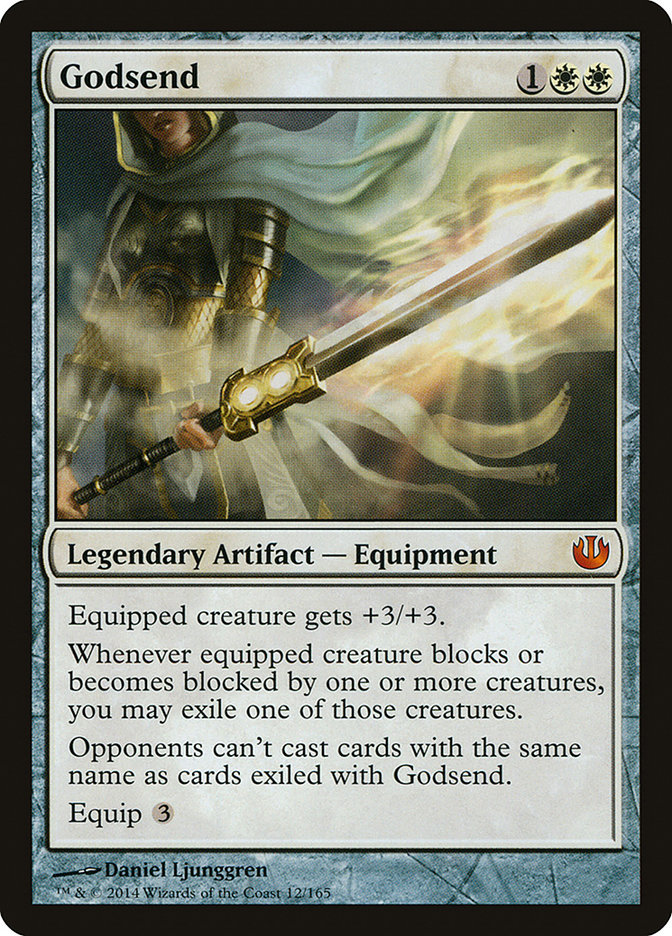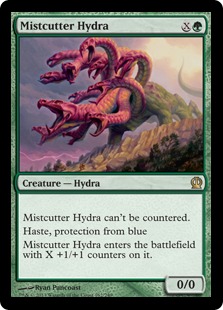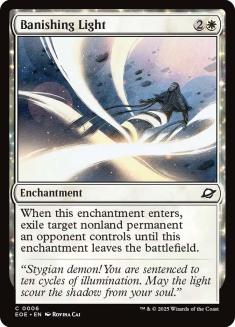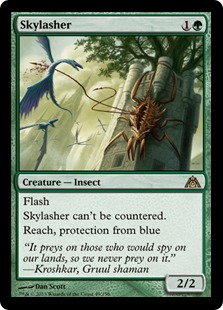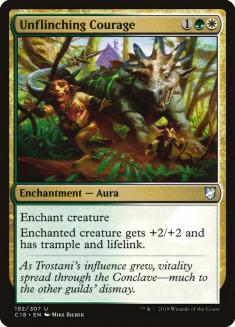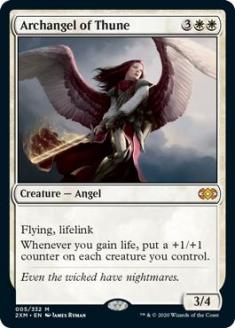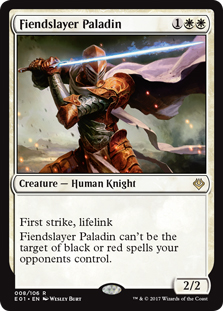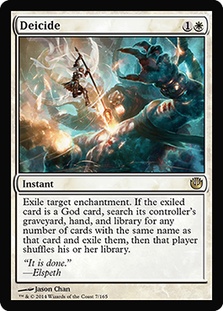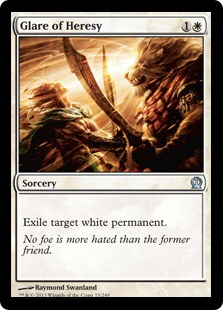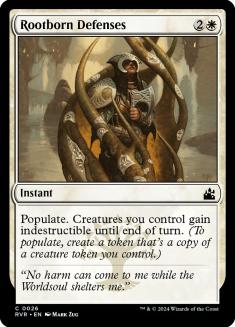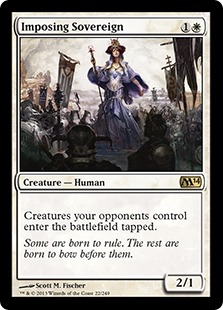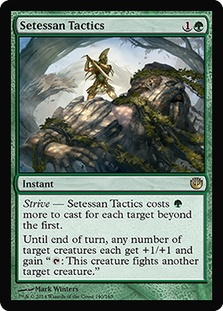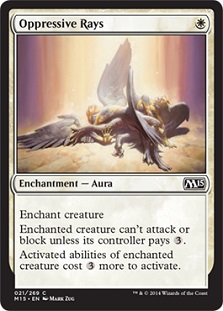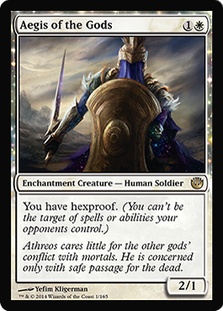When big boss man Cedric Phillips asked me to take a look at the upcoming Standard environment with the inclusion of Journey into Nyx, two things became immediately apparent.
The top tier decks do not get much help.
It is no secret that various forms of black devotion, blue devotion, and Sphinx’s Revelation control have been dominating Standard the past few months. With the addition of Journey into Nyx it seems that aside from some role players like Silence the Believers and Deicide these decks do not get any immediate help. This creates a window of opportunity for decks that are considered lower tier to shine, in particular because they are getting some new tools that allow them to break apart the dominant sequences that black and blue devotion were previously able to put together in the early game.
Everyone now has the appropriate mana to cast their favorite spells.
In a word: Mana Confluence.
A large part of the dominance exhibited by devotion strategies in Standard before Journey into Nyx had to do with the terrible mana that existed for two-color archetypes. In order to have the appropriate number of colored sources, decks that wanted to play powerful two- and three-mana spells with two or more color requirements had to look toward the Guildgates to satisfy their color needs.
Since the Temples were also part of the equation, decks that gave it a shot ended up with eight lands that come into play tapped and frequently had to play at least a turn behind. This led to many frustrating losses at the hands of the ever popular Thoughtseize into Pack Rat sequence or a fully powered Thassa, God of the Sea. In addition, it was suddenly very difficult to get damage in underneath the powerful four- and six-mana spells from Esper Control.
With Mana Confluence, deck designers now have a new price they can pay for untapped dual lands five through eight to go alongside the Return to Ravnica block shock lands. Two-color mana bases will now begin with:
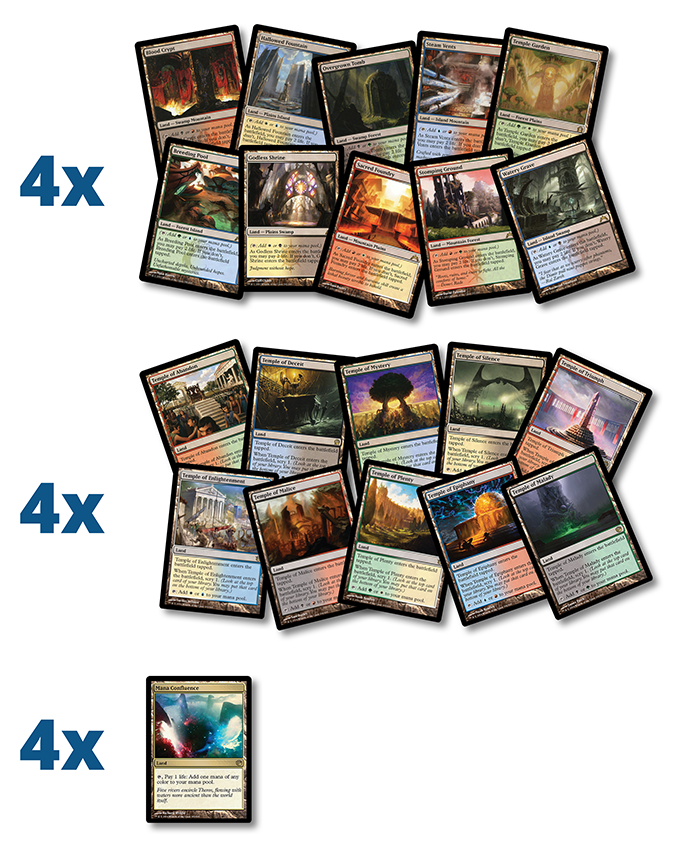
And can even go on to include Mutavault, which is a luxury two-color decks previously couldn’t even consider. While it still mostly stinks to have to play a dual land that comes into play tapped, the value of scry 1 is enough to satiate any serious complaining, and the drawback can usually be fit into the tempo of an early game without too much trouble.
It stands to reason that the best area to investigate when trying to find the most powerful application of a universal untapped dual land is multicolored cards. After taking a look at the powerful gold cards still available in Standard, three cards in particular clearly jumped out and said "we belong together."
Just look at the rate on those creatures! Have you ever seen so much value for so little mana investment? Power creep much? Where have these guys been hiding and what has been keeping them down?
As it turns out, they have been hiding in our rare binders, and the thing that was holding them back was eight lands that come into play tapped. Who would have guessed?
Creatures (23)
- 4 Dryad Militant
- 4 Loxodon Smiter
- 4 Voice of Resurgence
- 4 Fleecemane Lion
- 4 Soldier of the Pantheon
- 3 Brimaz, King of Oreskos
Lands (24)
Spells (13)

After deciding on four copies of Voice of Resurgence, Fleecemane Lion, and Loxodon Smiter as the core of the deck, I wanted to continue down the aggressive path with the remainder of my card selections. Let’s go over the other cards that I chose to play four copies of to round out the core.
For a moment while putting the finishing touches on this deck, I really wished that Elite Vanguard were legal in the format because I would have included it here in a heartbeat. Having access to aggressive curves with plays on each of the first three turns is crucial to the success of an aggro deck, and two-power creatures for a single mana are instrumental in making that happen. The additional words on Soldier of the Pantheon are mostly gravy, but they can sometimes be a drawback when considering the applications of cards like Selesnya Charm; Unflinching Courage; and even Ajani, Mentor of Heros. The additional words on Dryad Militant are mostly irrelevant.
This card just seems like an automatic inclusion every time I put together a green and white deck full of creatures. Every mode is relevant, from winning combat and trampling over chump blockers produced by Elspeth, Sun’s Champion to removing giant problems like Desecration Demon and active legendary devotion Gods to producing a threat in the end step against control. It is simply a good Magic card that is very difficult to play around in multiple spots.
While scanning through the options to prevent this list from turning into "a deck full of creatures," I was excited to find that this card is still legal in Standard. Having spent the better part of the last year testing for Pro Tours with Craig Wescoe, I have seen Brave the Elements in action a great many times. When all the creatures in your deck are white, there is simply not a better spell to be found for the low investment of one mana. As it happens, every single creature in this deck is white, and that brings Brave the Elements firmly into the realm of the insane. Cards like Call of the Conclave and Advent of the Wurm were initially considered and then discarded due in no small part to how much worse they make Brave the Elements.
Nice monocolored devotion strategies. Have fun not blocking my whole team.
Next are the cards that I only chose to play three copies of. Generally the decision to shave a copy of a card comes as a result of wanting to have access to a powerful effect without being punished by drawing multiples. As you can see, both of the cards that I elected to shave a copy of are three-mana spells and as such can become clunky. When brainstorming how many of a card to include in a new deck, I like to remember the following lines of logic:
- Four-Of: I want to draw this card often, and I love to see it in my opening hand.
- Three-Of: I would like to draw this card about once a game and do not want to frequently draw two copies. But if I do, it isn’t the end of the world.
- Two-Of: I would like to have access to this card once a game, but I’m not excited about drawing two copies and would prefer it not to be in my opening hand.
- One-Of: I like that my deck has this card in it, and it deserves to be here. But I never under any circumstances want to draw a second one.
Rounding out our package of powerful creatures is Brimaz, King of Oreskos. While his stats are powerful and his ability is relevant, there are times these days where a 3/4 with vigilance is somehow only average. The additional 1/1 creature is at its best on blocking duty, as it tends to just get picked off whenever Brimaz has the opportunity to attack profitably. These reasons plus his legendary status are enough to knock Brimaz out of four-of range. However, it cannot be ignored that this three-mana mythic rare does pack a punch in certain situations and makes his inclusion as "best available additional creature" an easy decision.
The only thing holding this card back is the fact that it is a three-mana sorcery speed removal spell in a deck that wants to invest its early time and energy attacking. As such, I imagine that for game 1 three is the correct number. However, time and the further development of the Standard format may prove that all four copies are necessary in the maindeck. If this occurs, you can look to Selesnya Charm or Brave the Elements to yield a spot for what will certainly be a format-defining enchantment for the foreseeable future.
Perhaps Brad Nelson said it best:
"This is the game changer, ladies and gentlemen. Standard will never be the same because this card exists. The format will revolve around this spell. Sure, it looks just like Detention Sphere, but it isn’t. It may even look like a worse card than Detention Sphere, but it’s not. Banishing Light is far and away the most groundbreaking card that Journey into Nyx has to offer thus far."
It certainly fits here.
Now we’re in the realm of powerful cards that I never want to draw multiple copies of. Many white aggressive strategies have employed the use of Glorious Anthem effects before to varying degrees of success, most recently with Spear of Heliod. The major issue comes in spending an entire card at three mana (a very important part of the curve for committing to your board presence) to add some power to the battlefield without adding a creature. This is reminiscent of what Limited games involving Loyal Pegasus are like. You have effectively spent a card to add two power to your side of the table, but it’s conditional upon you actually having creatures in play. Dictate of Heliod is different in a few ways.
First, the resource investment for the effect generated is slightly more favorable:
- Glorious Anthem + Glorious Anthem = +2/+2 to each creature for six total mana and two total cards
- Dictate of Heliod = +2/+2 to each creature for five total mana and one total card
Second, +2/+2 to each creature on one card is less like Glorious Anthem and more like Overrun. Soldier of the Pantheon + Fleecemane Lion + Loxodon Smiter + Dictate of Heliod = Are you dead yet?
Third, flash is pretty sweet. Imagine your opponent is attacking with three copies of Pack Rat. You block with Dryad Militant, Voice of Resurgence, and Fleecemane Lion and then flash in Dictate of Heliod. Have fun trying to figure out subtle ways to determine if your opponent’s "no blocks" is final or not . . .
"Okay, so at least one of these two cards has got to be insane, right?"
This was basically my logic when looking at Godsend and Dictate of Heliod. Godsend is a similar game-breaking, stat-boosting, noncreature addition that a player with many white creatures at their disposal would love to make useful. Dictate of Heliod is an immediate blowout while Godsend is more of a grind, but both cards have the ability to put a game out of reach in the event of a stall in action. One of these cards will almost certainly rise above the other and transcend to the level of two-of, but for now it is up to us and a quickly evolving environment to make that decision through trial by fire.
While I did not include a sideboard in the above list, the following cards will certainly play a role in filling out the available fifteen slots. It won’t be until some results from the new Standard become available for public consumption that we are able to make more concrete decisions.
Esper Control hates these cards:
Mono-Blue Devotion hates these cards:
Mono-Red Aggro hates these cards:
That should cover the matchups that could pose fundamental difficulties for this deck, but the following cards also may have sideboard roles to play depending on how the metagame shapes up.
Good luck at your Prerelease this weekend! I will be attending the Prerelease at Squabbles in Glen Burnie, Maryland if you would like to stop by and say hello. I’m looking forward to another fantastic event run by MTG First!

